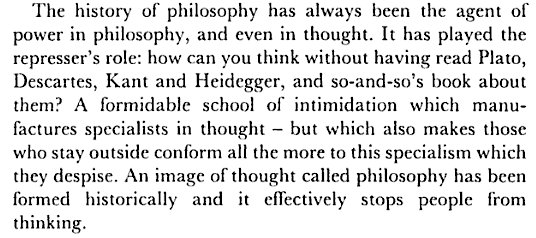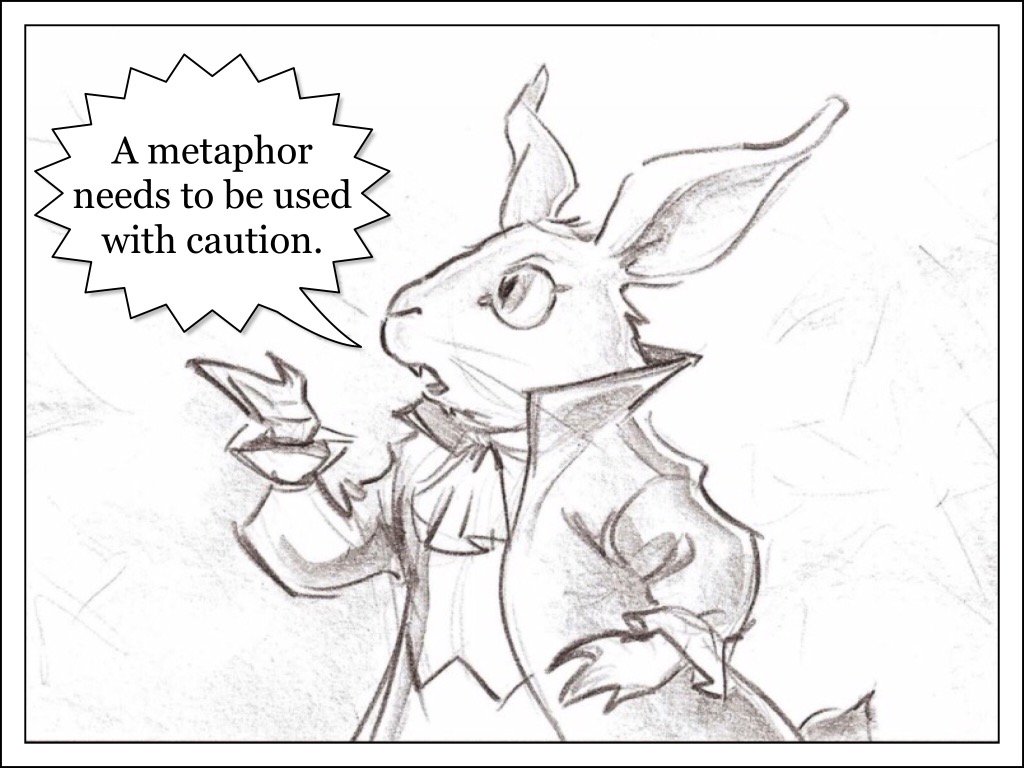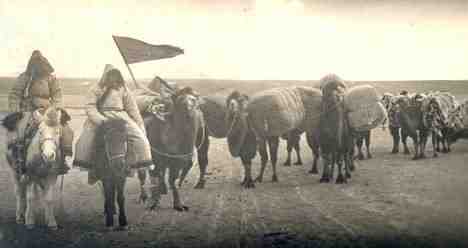What happensif I let goand cannot get back to myself
That's the risk with uncertainty
What happensif I let goand cannot get back to myself
That's the risk with uncertainty
I think we do need to notice that a new sort of resilience needs to be nurtured.
indeed
in so doingdidit increase the vulnerability of some participants as learners as
if the people are vulnerable with uncertainty then that is an important lesson.
some tension betweenparticipants who, in the absence of any significant course structure or guidelines,
As is there is no tension where there is a significant course structure and guidelines!!!!

smooth space is not always trouble free.
NOR is STRIATED SPACE
Deleuze and Guattari(1980/2013)identifyfurther potential difficulties for learner
Blimey. Deleuze and Guattari pedagogues of the rhizomatic approach?
“the ethical implications of pedagogical experimentation, interrelated processes of community and curriculum formation, the role of the MOOC convener, and learner experiences within MOOC communities”,
So what was the pedagogical experimentation beyond Community is Curriculum? (no answer - I have some ideas...)
Metaphors are always incomplete,
NOT a METAPHOR
Our data has shown that there was little agreement on what the rhizome means for teaching and learning; unpacking this wouldhave required some co-definition and agreement by Rhizo14 participants,andearly in the course discussion of theorywas seen as unnecessary
Go ahead unpack...

These pedagogicalissues are those that the rhizome as a literal metaphor,without being grounded in the theoretical conceptual framework that originated it,cannot cover.
What theoretical conceptual metaphorical pedagogical framework would that be?
Perhaps the difficulties that many have with reading and writing about Deleuze and Guattari’s workis the cause of thetragic paradox of the rhizome noted by Gregoriou (2004, p.240):
Why is it tragic?

The difficultiesof reading and writing about the rhizome as a metaphor for thinking, and teaching and learning, such that the writing models the principles expounded by Deleuze and Guattari,and can yet beunderstood,has challenged a number of authors, including us.
It's not a metaphor. It's not a metaphor. It's not a metaphor.
4, despite the course bearing the title Rhizomatic Learning: The Community is the Curriculum, there was limited willingness to discuss the complexity of the conceptual metaphor and how Deleuze, Guattari,and others had used the concept in different contexts
That was not the objective. In no place did it suggest that to be the objective. People are quite happy to discuss D&G
Some respondents were explicitly opposed to reading and discussing Deleuze and Guattari’s work
“I believe strongly that philosophy has nothing to do with specialists.” ― Gilles Deleuze
were emphatic in their animosity towardsmetaphor
Doesn't stop the writers of the article appropriating it as a metaphor
Nomads are adaptive and constantly evolving, they go with the flow, resist authority and control,and are “indifferent to boundaries laid down by the State apparatus”
“I believe strongly that philosophy has nothing to do with specialists.” ― Gilles Deleuze
Lack of engagement with theory and lack of appreciation of the incompleteness and complexities of the rhizome metaphorcan result in negative consequences

He also stated that he was “a nomad, not a knower” and that he was “hosting a party, not trying to tell you what or how to think”
This was a great success for many
“What happens when we approach a learning experience and we don’t know what we are going to learn? Where each student can learn something a little bit different –together?”(Cormier,2014a).
So for D.Cormier - this is rhizomatic?
Deleuze and Guattari’s
“It is not the slumber of reason that engenders monsters, but vigilant and insomniac rationality.” ― Gilles Deleuze, Anti-Oedipus: Capitalism and Schizophrenia
more movement through uncertainty, complexity and ambiguity
So the teacher's role is to create the space of learners to recognise/experience uncertainty/complexity
Bayne (2004) some thought thatthe teacher’sjob in rhizomatic teaching is to smooth striated spaces. A respondent wrote:
Can teaching be about creating smooth spaces?
This is Key.
Network and community. Two tricky words to compare/contras
Yes
Lines of flight are alwayspart of the rhizome, but are not without risk

rather than anyprescribed contentbeing offered.
The prescribed content was the short videos
there were no objectives for the course
That is not true.
There were clear objectives for the course. Community as curriculum. Investigation into the nature of learning/knowledge. etc
This echoesDeleuze and Guattari’s(1980/2013)concerns about over-representation and reification of metaphor
That's one reason no doubt they don't say it's a metaphor
It probably relates more to my experience as a learner than as a teacher. I think we can intentionally create learning experiences for others that resemble this metaphor, but the more we attempt to design, the more we are contradicting ourselves
Yes therein lies one contradiction
The rhizome wasalso thought to be useful as an explicitmetaphor for explaining how knowledge is created through social learningon the Internet
There might be some truth in that.
complexity, for instance, is a larger, more inclusive framework for rethinking education and pretty much everything else. But complexity is a rather abstract term that mostly confuses people
There is an element of truth in that
rhizome
magic
Recognition of the rhizome as tangible was also acknowledged byanthropologists Douglas-Jones andSariola (2009) who physically dug up an iris to support them in their auto-ethnographic process of learning to understand Deleuze and Guattari
Maybe we need to dig up Deleuze and Guattari to understand Irises
(We chose the word metaphor, as opposed to concept, because that was our understanding (and that generally of Rhizo14 participants) at the time of writing the interviewquestions.)
NOT A METAPHOR
Researchers lacked engagement with concept.
Will there be negative consequences?**
This interview was designed to elicit information about participants’ understanding of the rhizome metapho
NOT A METAPHOR.
Rhizo14 participants were surveyedabout their understanding of the relationship between the rhizome and teaching and learning

The methodologyand ethics of this data collection, and subsequent findings, have been reported in detail

he principles of the rhizome are therefore usefulconcepts for encouraging teachers and learners to break free from traditional ways of thinking and working.

disappearing into the distance

Deleuze and Guattari encouraged their patients to take lines of flight.

Deleuze and Guattari(1980/2013) worked with schizophrenic patients and others with complex mental problems.
NO THAT WAS GUATTARI.
Amongst the most significant of these concepts for teaching and learning that challenge traditional ways of thinking, are lines of flight
Lines of flight exist everywhere...especially in traditional ways of thinking
, heterogeneit
heterogeneity is in contradiction with community
The concept of the rhizome has also been used by Deleuze and Guattari (1980/2013) to explore ways of thinking
They have used different ways of thinking to explore.
The rhizome metaphor
Not a metaphor
metaphors need to be treated with care

Metaphors shape the way we see and the way we act, they enact a particular viewandcan be “self-fulfilling prophecies”

If wethink teachingis a rhizomecertain actions ensue
Teaching is a rhizome. Teaching is a rhizome. Teaching is a rhizome.
Is that enough?
“in creating ways of seeing they tend to create ways ofnotseeing”
you don't need a metaphor not to see.
with complex metaphors, such as the rhizome,
NOT A METAPHOR
hink outside the box,
BOX what box?

for the purposes of this paper wewill not worry undulyabout whether the rhizome is metamorphosis or literarymetaphor.We will consider the rhizome as a conceptual(about thinking and reasoning)metaphor and explore the extent to which it works.
Sod engaging with D&G
They believed that viewing the rhizome as a metaphor (in the sense of a linguistic expression)would imbue in the rhizome an unwelcome power andlead to over-representation and reification

Metamorphosis is the contraryto metaphor. ... It is no longer a question of a resemblance ... Instead, it is now a question of a becoming ...
So it's NOT A METAPHOR.
he discussion of theory being seen as problematicfrom that point on

Er not.
could have been framed as simply two different kinds of personal objectives (to learn more about the theory and to ignore the theory
Indeed it could have been framed as different personal objectives.
However the question comes here of the role of the carnival....
Carnival can be scary.

The lack of objectives led to a planned ambiguity about what would or could become topics.
There were implicit/explicit objectives.
There were objectives to experiment with a pedagogical approach which calls upon a planned ambiguity. (questioning fixed/traditional ideas about learning/knowledge/education)
But this is associated with the Community is the Curriculum.
With the ambiguity/indecision around the objectives (pedagogical approach to investigate nature of learning/knowledge/connection with power and communities)
This led inevitably to conflict as some participants had a fixed idea about what it was going to be about.
This is perhaps where the ethical issues raised lie.
If you are going to do a carnival people need to be prepared for it.
On one side you have carnival and the other you have people who perceive a real threat to identity.
Carnival can be scary.

suggested that engagement with theory might be necessary to understand rhizomatic learning
They didn't understand the carvival.
This assumes that there is a theory of "rhizomatic learning". (I mean is there such a theory?) D~G are about many things...
DG could also be accused of dissimulation and elitism in their writing. - which part of it does one engage with?
All of it?
Each week’s discussion was based on a provocative statement orquestion, as follows:•Week 1 –Cheating as Learning (January14–21)•Week 2 –Enforcing Independence (January21–28)•Week 3 –Embracing Uncertainty (January28–February4)•Week 4 –Is Books Making Us Stupid? (February4–11)•Week 5 –Community As Curriculum (February11–18)•Week 6 –Planned Obsolescence (February18–?
Mixed Messages.
We have mixed messages - was it about a pedagogical approach or about the nature of knowlege/learning? (a bit of both)
The title of the course suggests that Deleuze and Guattari’s(1980/2013)concepts and the principles of the rhizome would be discussed,
That is a massive assumption. The title suggested this to the authors of the article but not necessarily to others.
(and they were discussed)
Challenges to traditional ways of thinking about teaching and learning lie at the heart of rhizomatic learning and ultimately these challenges werethe curriculumfor the Rhizo14 MOOC
So the Curriculum was predefined but perhaps hidden and not made explicit.
Working across distributed platforms challenges assumptions about the nature of the curriculum, how knowledge is created, the role of the teacher,and the learning support that learners can expect (Cormier, 2008).
So this is talking about cMOOCs
Rhizo14 was designedas a connectivist MOOC (known as a cMOOC). cMOOCs
So it was designed as a connectivist cMOOC. What was rhizomatic about it? Are (n't) all cMOOCs rhizomatic? If not why? What is the RhizoUSP?
Our key finding was that experimental pedagogies such asthose based on therhizomecouldlead to both light and darkexperiences
My key finding on that finding was: Pfff
C wasinformed byDeleuze and Guattari’s (1980/2013) concept of the rhizome.
No it wasn't - or at least it wasn't that much.
Lack of engagement with theory and lack of appreciation of the incompleteness and complexities of the rhizome metaphorcan result in negative consequences, such as imbalances in power relations and increased vulnerability for some learners.
So if people have an engagement with theory (how much?) will this mean there will be not negative consequences?
So if people appreciate the incompleteness and complexities of the "rhizome metaphor" (not a metaphor for Deleuze) will there no negative consequences?
And if researchers have a lack of engagement with the theory/appreciation of the incompleteness/complexities of the rhizome metaphor will this result in negative consequences?
And if the course convenor has a lack of engagement with theory and lack of appreciation of the incompleteness and complexities of the rhizome metaphor can that result in negative consequences?
"Une théorie est une question développée, et rien d’autre : par elle-même, en elle-même, elle consiste non pas à résoudre un problème, mais à développer jusqu’au bout les implications nécessaires d’une question formulée." Deleuze
but that knowledge and understanding of Deleuze and Guattari’s conceptual principles of the rhizome was more difficult.
YUP
raised concerns about the ethics of using experimental pedagogies in designing MOOCs.
Aren't all pedagogies are "experimental".
Deleuze and Guattari’sprinciples of the rhizomewere used to inform the design of a massive open online course(MOOC), Rhizomatic Learning
That is highly debatable.
principles of the rhizomewere used to inform the design of a massive open online course(MOOC), Rhizomatic Learning: The Community is the Curriculum, which came to be known as Rhizo14.
That is highly debatable.
One respondent who described herself as never fully arriving or leaving the course wrote of connecting
more to the metaphor as a learner than a teacher:
It probably relates more to my experience as a learner than as a teacher. I think we can
intentionally create learning experiences for others that resemble this metaphor, but the
more we attempt to design, the more we are contradicting ourselves. YUP EXACTLY

Rhizo14 participants were surveyed about their understanding of the relationship between the rhizome and teaching and learning.

They believed that viewing the rhizome as a metaphor (in the sense of a linguistic
expression) would imbue in the rhizome an unwelcome power and lead to over-representation and reification.
EXACTLY. but that is exactly what is done here - an attempt to reify.
Once the concept is defined/reified you are missing the point. You are no longer concerned with mapping but with tracing.

We suggest that this is more likely to be successful if we
remember that Deleuze and Guattari (1980/2013) did not oppose the root and the tree and that they were
opposed to chaos, as we explored in an earlier section.

... even though I believe in rhizomes as a metaphor for learning, it’s harder to connect it
back to an intentionality around teaching and/or designing instruction ...

We recognise that the rhizome can successfully challenge traditional authoritarian, hierarchical
approaches to teaching and learning, freeing learners to follow their own learning paths and determine
their own learning objectives.
The rhizome challenges nothing.
we can say that using the rhizome as a metaphor for teaching, learning, and course design
requires knowledge and understanding of the theoretical principles outlined by Deleuze and Guattari
(rhizome as a concept)
Well you can say it but that is all - that is an assertion.
But that is not what D.Cormier's rhizomatic learning is about.
of Deleuze and
Guattari’s (1980/2013) principles of the rhizome
I'm not sure they would agree
The rhizome metaphor does not call for the tree to be opposed to the root. Each is a necessary condition
for the other (Drummond, 2005). There is need for both arboreal and rhizomatic thinking.
YES. INDEED.
Deleuze and Guattari’s (1980/2013) rhizome is a way of understanding the philosophy of becoming
which takes learners into uncertain, unstable, and disruptive spaces
Hmmm....
We also believe that if the rhizome is going to be used as a stimulus for
change, then superficial treatment and understanding of the concept is potentially damaging for learners’ becoming.
There may well be ethical questions here.
we do not believe that any research method can
be intrinsically rhizomatic.
indeed!
BUT that depends on what you mean by research.
The concept of the rhizome has been applied successfully by learners and teachers within education (St.
2004), but Deleuze and Guattari (1980/2013) did not place in opposition the root (rhizomatic
thinking) and the tree (arboreal thinking), nor lines of flight and territorialisation, nor smooth and striated
space. To do so would be to create a dogmatic image of thought (Drummond, 2005).
But that is what happened....?
Lack of recognition of the necessary condition of the tree was perhaps the most significant element of the
paradox of the rhizome evident in the Rhizo14 MOOC.
"necessary condition of tree" that rather depends what that means....
But Deleuze and Guattari were opposed to chaos
So?
They are dead.
Tensions can also arise in relation to the rhizome principle of heterogeneity. The heterogeneity of people
and ideas in a community that was also a course, such as Rhizo14, could result in uneven distribution of
power with some individuals leveraging this power differential

I think we do need to notice that a new sort of resilience needs to be nurtured.
YES certainly.
The course embraced this disruption, uncertainty, and chaos as a necessary component of learning in
an age of abundance and massive open online learning environments (Cormier, 2013), but in so doing did
it increase the vulnerability of some participants as learners as suggested by Gale
BUT THAT was THE OBJECTIVE...
Therein lies the question of ethics.
The smooth space of Rhizo14
WHAT SMOOTH SPACE?
But as Deleuze and Guattari have pointed out, smooth space is not
always trouble free. Movement in smooth space is unpredictable and uncertain with no end in sight.

Perhaps the difficulties that many have with reading and writing about Deleuze and Guattari’s work is the
cause of the tragic paradox of the rhizome noted by Gregoriou (2004, p. 240):
Well the difficulties are is that is difficult to read. That is nothing to do with any tragic paradox....or is it?

metaphors (not metaphor) are often unconscious and embodied in experience.

I still don’t know what rhizomatic learning is. I’ve enjoyed (am enjoying) #rhizo14 because
of the people I have met (am meeting), but I think that it will need a lot more fleshing out
before I can decide whether it is useful. I doubt if any one metaphor will ever be sufficient
for learning, though.

Metaphors are always incomplete,
PARTICULARLY IF THEY ARE NOT METAPHORS.
unpacking this

THIS? GOOD LUCK! ![] (http://www.bumblenut.com/drawing/images/plateaus/1000platoscover.gif)
Our data has shown that there was little
agreement on what the rhizome means for teaching and learning.

This interview
was designed to elicit information about participants’ understanding of the rhizome metaphor and to follow up on their survey responses with individual questions.

“The conceptual rhizome does not map on to a
botanical definition.”
NOPE so don't use it as the metaphor!!!
Like St. Pierre and Douglas-Jones and Sariola, we are also acutely aware of the arboreal constraints under which we are working and the pressure to produce a linear text which is ordered and coherent
But nobody is forcing you to do that.
despite the course bearing the title
Rhizomatic Learning: The Community is the Curriculum,
THE COMMUNITY IS THE CURRICULUM ***
I would thought that was pretty clear
However therein lies the problem - the community is a reification.
despite the course bearing the title
Rhizomatic Learning: The Community is the Curriculum, there was limited willingness to discuss the
complexity of the conceptual metaphor and how Deleuze, Guattari, and others had used the concept in
different contexts.
IT'S NOT A METAPHOR
And that is not true. - What does limited mean?
Participants were
encouraged to start wherever they wished, to make multiple connections between each other and with a
diversity of participant generated and shared resources, to create their own personal learning maps and
content, to engage in multiple different modes of activity, in multiple spaces, and to manage their own
learning. A culture of play and fun emerged; many artefacts incorporating poetry, music, personal
writings, photography, and art works were produced. A-signifying rupture and lines of flight, if not lines
of fantasy, and nomadic behaviours were in evidence.
That's already pretty good!!**
The tragic paradox of the rhizome metaphor
IT's NOT MEANT TO BE A METAPHOR
Ultimately for most respondents the value of the Rhizo14 experience lay in “the spirit of exploration,
openness, experimentation, of trying new things” (interview respondent), rather than any engagement
with Deleuze and Guattari's principles of the rhizome.

Some respondents were explicitly opposed to reading and discussing Deleuze and Guattari’s work. “I was
so hacked off by academic posturing around D&G on Rhizo14 I've set my face against them.”

YUP
Deleuze and Guattari (1980/2013) were emphatic in their animosity towards metaphor as
resemblance, as we discussed earlier. One respondent stated that the rhizome is not a model or a theory;
others explained it in terms of a lens, a stimulus, or a story. None of the respondents referred to it as a
concept, which is how Deleuze and Guattari explained it, but then few respondents were familiar with
Deleuze and Guattari’s work, and this was not generally seen as problematic:
BUT THE RESEARCHERS ARE NOT FAMILIAR WITH IT EITHER.
One respondent noted the contradiction of discussing rhizomatic teaching in a course where there was no
curriculum:
THERE WAS A CURRICULUM - IT WAS THE COMMUNITY
Rhizomatic teaching was thought by some to challenge the status quo and power of the teacher, and like
Bayne (2004) some thought that the teacher’s job in rhizomatic teaching is to smooth striated spaces.
But that is impossible;

respondents seemed unclear about whether a rhizome suggests a network or a community and
whether and how it relates to connectivism:
YUP
for explaining how knowledge is
created through social learning on the Internet, “The best social learning leads to the co-creation of
knowledge” (interview respondent), particularly across distributed platforms
learning can be complex, chaotic, unpredictable, exploratory, creative and playful.
Just like CLMOOC/CCOURSES/MOOCMOOC etc
who physically dug up an iris to support them in their auto-ethnographic process of
learning to understand Deleuze and Guattari.
Perhaps we should dig up Deleuze and Guattari to better understand Irises?
The rhizome was thought by interview respondents to be useful for exploring new ways of thinking about
education, but incomplete.
Yup.
The rhizome and the nomad are inseparable in the sense that the rhizome is the path that the  nomad follows.
nomad follows.
lines of flight enable us to think otherwise and resist codes and
powers (Deleuze, 1988, cited in Avalos & Winslade, 2010).

A line of flight escapes territorialisation and, through deterritorialisation (a sudden swerve or
rupture creating new lines of segmentarity) metamorphoses into something new.

A line of flight escapes territorialisation and, through deterritorialisation (a sudden swerve or
rupture creating new lines of segmentarity) metamorphoses into something new.

Lines of flight are a means of
evading dominator systems of thought, a means of breaking down existing connections and power
relations (Winslade, 2009)
This was NOT flying
Deleuze and Guattari (1980/2013) worked with schizophrenic patients
NO that was Guattari.!!!
Since the mid-50s Félix Guattari became a fixture at La Borde, revolutionizing its practice and organization and producing alongside Oury a large body of theoretical work on the practice and theory of schizoanalysis,
Amongst the most significant of these concepts for teaching and learning that challenge traditional ways of thinking, are lines of flight and the nomad.
"Lines of flight" exist in any classroom.
Encouraging lines of flight - is that really possible?
Cartography/Decalcomania
NOPE there is a a contradiction here.
There is an attempt to predict outcomes : a) The creation of instability/uncertainty b) The creation of community.
Multiplicity/A-Signifying Rupture.
Design is a-centred. - up to a point but not really.
It allows for break away groups - yes.
Relevance to teaching.
Encourage ceaseless connection - what's the difference with cMOOC?
Encourage diversity in people - what's the difference with a MOOC?
The system has no beginning, or end, can be entered at any point. - Teaching? well on the internet documents can be entered at any point.
In the case of a course - can it be entered at any point? - Probably not.
CREATION OF COMMUNITY is in contradiction with heterogeneity.
Decalcomania "The tracing has translated the map into an image, it has already transformed the rhizome into roots and raddicles."

A-signifying Rupture "a rhizome may be broken but it will start up again on one of its old lines, or on new lines."

"Heterogeneity - there is no ideal speaker-listener - there is no homogenous linguistic community."
This appears to be the criticism of the course?
"Cartography - a map that is always modifiable and has modifiable and has multiple entryways and exits and its own lines of flight."
Hypothes.is enables this article to become rhizomatic perhaps?
"Multiplicity there is no unity to serve as a pivot in the object or to divide in the subject." this article is clearly not rhizomatic.**
"A rhizome ceaselessly establishes connections between semiotic chains" - this article is clearly not rhizomatic.
The concept of the rhizome has also been used by Deleuze and Guattari (1980/2013) to explore ways of thinking that challenge hierarchies and deprivilege centres of authority. Not sure about that. Are they really exploring ways of thinking or using different ways of thinking to explore (and challenge)?**
In botanical terms a rhizome is a subterranean stem of a plant, a creeping root stalk, which spreads
laterally in multiple directions and surfaces to produce a clone of the original plant in an unexpected
location. Some rhizomes, such as ground elder, are considered weeds which gardeners find very difficult
to control. Other rhizomes, such as lilies of the valley, with their beautiful scented flowers, are more
welcome. The botanical rhizome has both positive and negative interpretations, and these may vary by
location; in the old saying a weed is a plant in the wrong place.
Are we talking about Deleuze/Guattari or botany?
we will now outline some of Deleuze and Guattari’s (1980/2013) principles of rhizomatic thinking
attempt to trace?
Having established that metaphors need to be treated with care and that for the purposes of this paper
when we discuss metaphor we are referring to conceptual rather than literary metaphor,
DELEUZE/GUATTARI say it is NOT a metaphor.
If we think teaching is a rhizome certain actions ensue.
Who is thinking of teaching as a rhizome? Good luck
writes of metaphors, “in creating ways of seeing they tend to create ways
of not seeing” (p. 348). Metaphors shape the way we see and the way we act, they enact a particular view
and can be “self-fulfilling prophecies” (Lakoff & Johnson, 2008, p. 132). Any cross-contextual mapping
highlights a set of features whilst backgrounding others. This is the case in all metaphors, including the
rhizome.
What is the metaphor which shapes this action?

Likewise, for the purposes of this paper we will not worry unduly about whether the rhizome is
metamorphosis or literary metaphor. We will consider the rhizome as a conceptual (about thinking and
reasoning) metaphor and explore the extent to which it works. ANOTHER (MIS)APPROPRIATION?**
Where is the engagement with the concept here?
If metaphors such as the rhizome can be used to change learners’ conceptual frameworks and encourage people to think outside the box,
It's not the bloody metaphor which will make you think outside the box.

"Lack of engagement with theory and lack of appreciation of the incompleteness and complexities of the rhizome metaphor can result in negative consequences, such as imbalances in power relations and increased vulnerability for some learners."
So if people have an engagement with theory (how much?) will this mean there will be not negative consequences?
So if people appreciate the incompleteness and complexities of the "rhizome metaphor" (not a metaphor for Deleuze) will there no negative consequences?
And if researchers have a lack of engagement with the theory/appreciation of the incompleteness/complexities of the rhizome metaphor will this result in negative consequences?
And if the course convenor has a lack of engagement with theory and lack of appreciation of the incompleteness and complexities of the rhizome metaphor can that result in negative consequences?
"Une théorie est une question développée, et rien d’autre : par elle-même, en elle-même, elle consiste non pas à résoudre un problème, mais à développer jusqu’au bout les implications nécessaires d’une question formulée." Deleuze
Elizabeth St. Pierre (2004) thinks it is possible to over-think what Deleuze might mean and suggests that
we:
give up worrying about what Deleuze might have intended and use him in [our] own work
‘to free life from where it’s trapped, to trace lines of
into a different way of being in the world. (p. 284)
EXACTLY
BUT that is the problem of their bloody book. We become tracers of its mapping.
Metamorphosis is the contrary to metaphor. ... It is no longer a question of a resemblance
... Instead, it is now a question of a becoming ...
Ah voilà - becoming...
the rhizome is a
concept that challenges authoritarian and hierarchical ways of thinking.
Up to a point...
Their language does not challenge elitism among French academics...
In our context for this paper, an example of this
mapping might be that from the rhizome to teaching and learning. Good luck to mapping the rhizome to teaching!!
Metaphors in teaching and learning
D. Cormier now calls it a 'story'. (and at other times a metaphor).
"What could have been framed as simply two different kinds of personal objectives (to learn more about the theory and to ignore the theory) became instead a site of contention. The situation was resolved by all three parties leaving the course, and the discussion of theory being seen as problematic from that point on."
Indeed it could have bee framed as simply two dfferent kinds of objectives.
The discussion of theory was seen as problematic by some particpants - it was not "seen as problematic from that point on" as a generalisation.
*suggested that engagement with theory might
be necessary to understand rhizomatic learning.*
But that assumes that there is a theory of "rhizomatic learning". (I mean is there such a theory?) D~G are about many things...
DG could also be accused of dissimulation and elitism in their writing. - which part of it does one engage with? All of it?
The lack of objectives led to a planned ambiguity
There were implicit objectives.
One of these objectives was to introduce a planned ambiguity.
There were objectives to experiment with a pedagogical approach which had been called "rhizomatic learning" which is related to the concept of the Community being the Curriculum.
As there were mixed messages - there was conflict.
This is perhaps where the ethical issues lie.
One can indeed question a approach which is not explicit in explaining its carnivalesque objective to get people to question all the basis of knowlege and learning. People don't give up their ways of learning and their attachment to what they consider knowledge or their status so easy.
*Week 1 – Cheating as Learning (January 14–21)
• Week 2 – Enforcing Independence (January 21–28)
• Week 3 – Embracing Uncertainty (January 28 – February 4)
• Week 4 – Is Books Making Us Stupid? (February 4–11)
• Week 5 – Community As Curriculum (February 11–18)
• Week 6 – Planned Obsolescence (February 18–?)* Mixed Messages.**
So therein lies the problem we have mixed messages in the course titles - was it about a pedagogical approach or about the nature of knowlege/learning?
The answer of course was it was a mixture of both.
The title of the course suggests that Deleuze and Guattari’s (1980/2013) concepts and the principles of the rhizome would be discussed,
That is a massive assumption. The title suggested this to the authors of the article but not to others.
*The intention of the MOOC was to challenge the traditional notion of a course where the content is
planned in advance. The course was therefore an experiment designed to explore “What happens when
we approach a learning experience and we don’t know what we are going to learn? Where each student
can learn something a little bit different – together?” (Cormier, 2014a).*
So is this the key difference?
In the case of other cMOOCS the course curriculum is defined and published before - but not the content and discussions?
*Working across distributed platforms challenges assumptions about the nature of the curriculum, how
knowledge is created, the role of the teacher, and the learning support that learners can expect (Cormier,
2008). Challenges to traditional ways of thinking about teaching and learning lie at the heart of
rhizomatic learning and ultimately these challenges were the curriculum for the Rhizo14 MOOC.*
So aren't these challenges of assumptions exactly the same as for rhizo14?
*Another key characteristic of cMOOCs is that the learning takes place across distributed social media
sites rather than within an institutional platform (Bayne & Ross, 2014; Haggard, 2013). This necessitates
distributed open communication between self-motivated learners and results in “a self-organising network
with many sub-components” (Bates, 2015, Chapter 5, Section 5.3.2.2).*
So this is exactly the same as rhizo14?
*was designed as a connectivist MOOC (known as a cMOOC). cMOOCs can
take a variety of pedagogical approaches. Approaches to their design are still evolving (Bates, 2015) but all are based on four key principles: autonomy, diversity, interactivity, and openness (Downes, 2014).*
So it was designed as a connectivist cMOOC. What was rhizomatic about it? Are (n't) all cMOOCs rhizomatic?
cMOOCs emphasise and promote connectivity, content creation by participants, open sharing and peer-to-peer teaching and support, with no set curriculum, assessment, or formal teacher-student relationships (Bates, 2015).
So what on earth makes this cMOOC more rhizomatic that other ones?
we continue our research with an exploration into the learners’ experiences of using the rhizome as a conceptual framework for teaching and learning in a MOOC.
hmm
Our key finding was that experimental pedagogies such as those based on the rhizome could lead to both light and dark experiences.
My key finding on reading that was: Pfff
People have good and bad experiences of life.
The design and delivery of this MOOC was informed by Deleuze and Guattari’s (1980/2013) concept of the rhizome.
No it wasn't - or at least it wasn't that much.
Our findings reveal that many participants could relate to and welcomed "the anti-authoritarian, anti- hierarchical characteristics of the rhizome"
Anti-authoritarian characterics - hmm. Are these characteristics of the rhizome or the cmooc?
but that knowledge and understanding of Deleuze and Guattari’s conceptual principles of the rhizome was more difficult. Yup
raised concerns about the ethics of using experimental pedagogies in designing MOOCs.
Aren't all pedagogies are "experimental".
Ethics - of research? Ethics - of 'non-experimental pedagogies'.
Well… rhizomatic learning (as I’ve been talking about it) suggests that there is not start point and ending.
If I have never seen a computer and never written a blog post - that's a start point...
Terry Anderson’s (edited) book on online learning.
This is another aspect of the content
Blog posts
So this and the other activities are the curriculum.
that learning is something that can be effectively (if at all) measured in the classroom, I’m trying to measure effort. Effort defined quite broadly. Let me know how you think I’m doing
Can't you measure literacies?
Some have never stepped foot in the classroom as teachers. Some have spent 30 years there. Some spent 25 years working on a job that they are now going to teach to others. Some have never been in the formal workforce before. I had one student last year with PhD in chemistry working with a career pipe-fitter. I mean… how awesome is that?
So adult self-motivated learners?
It shouldn’t, in my view, simply lock down the content so that what constitutes ‘learning’ is measured in how much we can prove that content has been transferred from the instructor to the learner.
so this is socio-constructive/active/connected learning.
Is the USP of rhizomatic learning The Community as Curriculum?
The more other students see knowledge negotiation happening from their peers, the better. This might be as simple as a blog post or video.
collaborative learning - creation of learning community culture.
Finding relevant people in a field, checking out their work, using their work to triangulate to other people and ideas… this is what knowledge building is all about.
rhizomatic learning = networking building up a vision fo existing community.
it doesn’t allow for connection between learner and content creator.
so this is where it is essential to have conversation with content creators..
Collaborative learning should not be seen as a cure all for the ills of education.
So rhizomatic learning = collaborative learning?
premised on working with three of what I consider to be the most important technologies you can use in education – blogging (wordpress) for reflection, a networking tool (twitter) for connection, and googledocs for curation.
So in a sense these are literacies which are being developed - and therefore they are the implicit curriculum.
create a common language t
and this language is common to...?
Improve collaborative work Our group work belongs to all of us, and it is the record of what we’ve done together. If everyone spends an hour going in, cleaning up links, making new connections, fixing formatting… our work gets much better. Imagine you were working on a house together and you saw a part of the house unpainted. Get brush. Paint.
So this IS the curriculum. - Learning to work collaboratively in a digital environment.
Give your colleagues good feedback,
So this is overtly taught.
If I, as an educator, create an obligation by setting an artificial performance mark or some other leverage of power, then we are working from my own context and history and not yours.
But you are...
You need to MAKE the time to title things properly…
Overt teaching
in the community.
which community?
Teaching students how to make good questions for themselves, to ask them in ways that are going to lead to effective searching and learning, is something that should be overtly done.
OK so this is overt teaching
encouraging uptake
So this is not the learners deciding on the curriculum
e can, i think, allow people to go out on the internet unscripted and allow them to remediate those things that they have ‘diagnosed’ as something they don’t quite get.
Hmmm...
Student responsibility for learning And this, of course, is what i want in the first place.
I could give them a list of words to memorise and they are responsible for learning it.
Encouraging students to create a list of ‘things i don’t get’ and following it up with strategies of remediation would not only be useful for the learner but for the whole community of leaners.
but if they don't get it - they aren't really necessarily deciding on the curriculum...
ould further reinforce the idea of student control of learning behaviours and suggest a transfer of power from teacher to learner.
but that may be an illusion.
It is easy to forget when you are immersed in a field that many people not only lack an understanding of the meaning of particular words, they are excluded from the context
indeed
i would suggest that being ‘outside’ the conversation is lonely
not if you are many to be outside the conversation
there IS a curriculum and to some might suggest that that curriculum is fixed and stagnant
there is a curriculum. It is fixed by the use of tools.
who have literacy gaps that they can go ahead and fill them on their own
how do you know if you have a gap?
Of perspectives
Really?
In an open environment I might have people from all over. I might have people coming from vastly diverse backgrounds and influences.
But all with access to internet...
How much of our desire for perfection in things like spelling and argument are directly related to the finality of print?
print or power?
be open and online
good question
This need not be a one way conversation where I’m reciting the ideas of our forebears to you for you to repeat.
Note sure that this was necessarily the case...
e need not make the 2000km journey braving pirates to get together and talk about our practice.

democratizing power
"democratizing power' - not sure about that
Raise your hand if you’ve never been or had a substitute teacher who read from the textbook, assigned the questions from the back of the chapter, and never yet understood what they were talking about. Yeah. I didn’t think so.
Don't you do that?
Teachers
define teacher. - how has this concept changed?
not a terribly efficient way
define efficient.
vast majority of learners, whether in churches or in schools
So learners are those related to the elite (what of the others?)
there is a RIGHT answer.
GOD/CHURCH/POWER
Isn't this still true? (dependent on what group you want to belong to?)
Learning became what is called a catechetical act. Read and repeat. Memorize as written.
Is a lecture reading?
is a critical turning point in the history of knowing and learning.
knowing and learning to an elite
in this case
in this case - which case?
At this time, however, most things were performative. Plays were performed.
Has this changed?
Caesar was willing to take a trip of 2000KM through pirate-infested waters in order to learn from one man.
Are we sure?